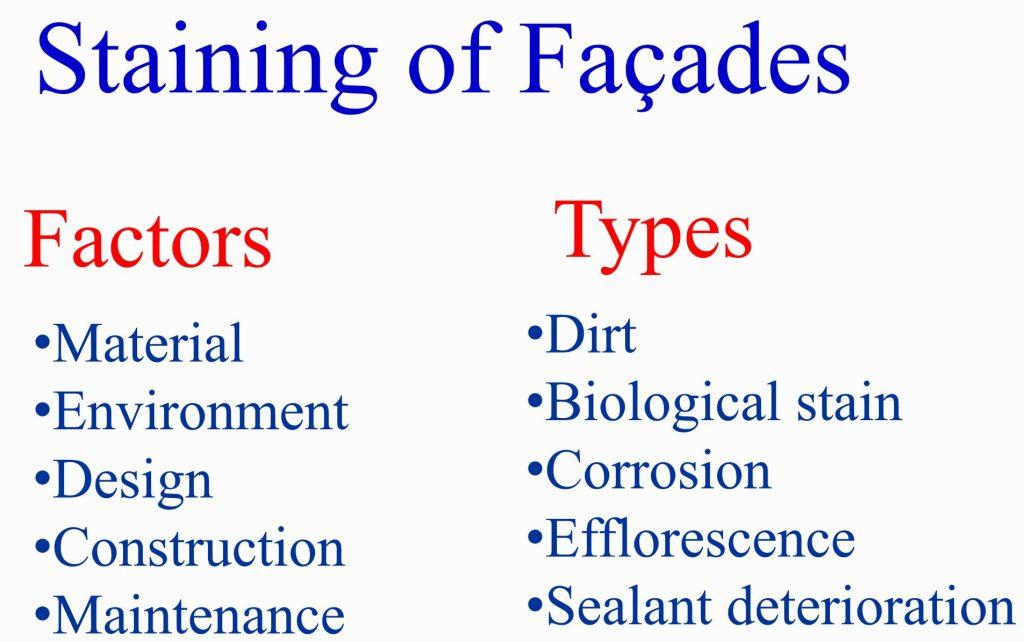Case 4
- Introduction
- Causes of Defects
- Good Practices
- Standards
- Maintenance and Diagnostics
- Remedial
- Similar Cases
- References

Introduction
Staining OF Grooves
Type of Building: Institutional
Dark stains marks are formed below ledges and below large areas. It was prominent on the greyish coloured external facade of Shanghai plaster.
The streaks of stain marks were especially prominent a small distance off the ledge and the intensity grew lesser as the distance increased. On large surface, the stain marks were also present a little off the movement joints and grooves present.
Plaster provides a protective layer on building exteriors and is traditionally produced by blending cement, sand, water, and lime together. The number of plaster coats applied depends on the type of wall. The correct plaster thickness is vital for both a visually appealing finish and the wall’s overall durability and performance.
Shanghai plaster has long been adopted for neoclassical buildings e.g. Former City Hall and Supreme Court as well as the Fullerton Hotel. These majestic buildings are in fact made of reinforced concrete but clad in a finish that gives them the appearance of expensive stone. This stone-like finish is known as ‘Shanghai plaster’. Fourteen out of Singapore’s 75 national monuments feature extensive use of Shanghai plaster—a widely popular choice in local construction from the 1920s to ’60s. Rarely seen in new buildings today, Shanghai plaster represents the legacy of a material culture from a bygone era.
Modern ready-mixed options have demonstrated superior qualities in terms of adhesion, durability, and water resistance. Some of the more commonly used solutions include:
Gypsum plaster – Lightweight, fire-resistant, and quick-drying, it is ideal for repairing imperfections and renovations.
Cement plaster – Known for its durability and weather resistance, this option is popular for exterior walls. It is typically paint-friendly and suitable for texturing.
Acrylic plaster – This flexible and waterproof alternative is perfect for damp areas like bathrooms and laundry rooms. Its primary advantage is that it comes pre-coloured and is suitable for painting.
Moisture movements and/or retention will induce other problems including dirt, biological stain, corrosion, efflorescence and sealant deterioration:

See also Staining of Facades
